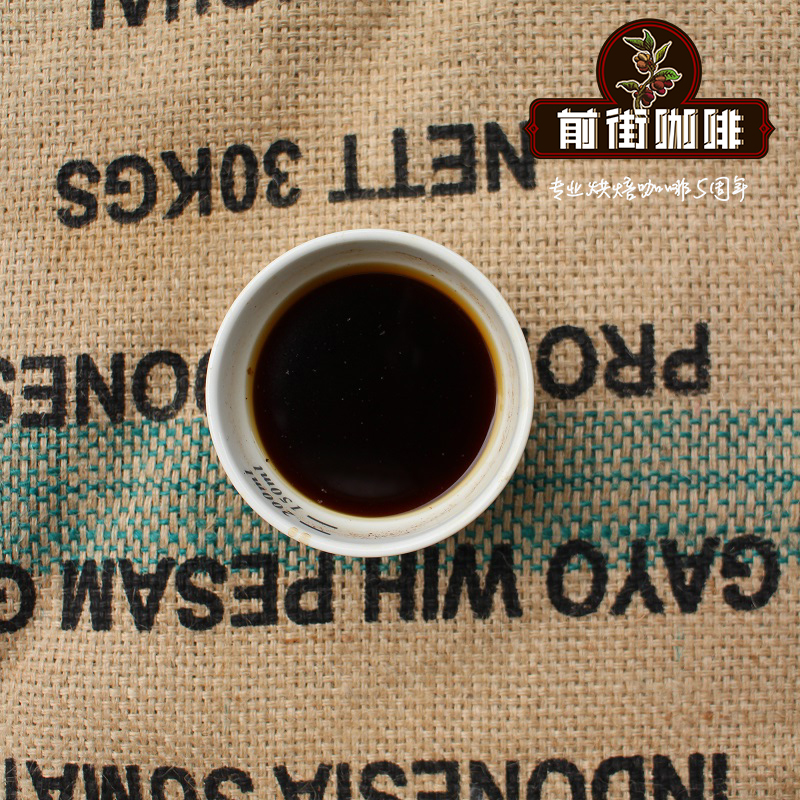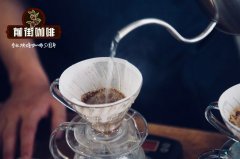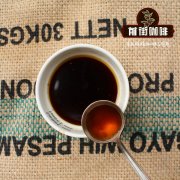What are the characteristics of Saifeng coffee? How to use the plug-in coffee pot?

Professional coffee knowledge exchange more coffee bean information please follow the coffee workshop (Wechat official account cafe_style)
Even if you choose the same kind of coffee beans, the final coffee flavor will be different due to different types of extraction utensils. The design of extraction apparatus is also made according to different basic extraction principles.
① immersion (steeping)
It refers to the method that the coffee powder is poured into the container and fully mixed with hot water, and then left for a period of time before extraction. According to the degree of grinding and water temperature, it will affect the degree of contact between the two. Different finished products will also be extracted because of the stirring of coffee powder and the speed of coffee powder separation.
② decoction (decoction)
It refers to the method of boiling the coffee powder and water in the container after mixing. After the temperature rises to about 100 ℃, it will be difficult to continue extraction because of the high temperature, and the water begins to boil, which may lead to serious turbulence 1.
* Note 1: water forms so-called turbulence when it passes through coffee powder. When the flow velocity is small, the coffee powder and water are not easy to mix, which is called laminar flow or advection; when the velocity begins to change, when the wave line occurs, it is called excessive flow; finally, the velocity becomes larger and larger, so that the layer is no longer obvious, and even when there is vertical flow, it is called turbulence.
③ percolation (percolation)
The container containing ground coffee powder (brewing chamber) is heated directly and the hot water is recycled by steam pressure to extract the coffee. When heated, the water boils up, passes through the powder trough filled with coffee powder, and then flows out through the pipe, and the cycle is repeated. At this time, the degree of grinding, water temperature and circulation speed will be different due to different contact time.
④ trickle filtration (drip filtration)
It refers to a simple way to pour coffee powder into a filter and fill it with hot water, and then use a glass pot or coffee thermos to filter out the extract. It is one of the more common methods that have been improved recently, including handdrip (or pour over) and so on. The concept of dripping is extremely complex, and there are many different dripping methods, and there are many related books, so I hope you can choose the appropriate tools according to the flavor of coffee you want.
Hand flushing also has a variety of extraction instruments, so it will be extracted in different ways. The extraction principle is carried out by drip filtration, so the contact time caused by different flow rates is a very important factor. at the same time, like other extraction utensils, coffee flavor will be changed due to different water temperature, filter cup and filter paper.
⑤ vacuum Filtration (Vacuum filtration)
The most representative is the plug wind kettle. Is the use of upper and lower two glass pots and fusion immersion (Steeping) extraction. Affected by the steam pressure, the hot water will pass through the coffee powder from the bottom of the glass, then filter by the pressure difference between the upper and lower pots, and then extract the coffee. The water in the lower pot is heated and converted into steam form, which will affect the number of times of coffee and water soaking due to the different degree of steam release, bringing more variables. Different vacuum methods will affect the contact speed, and different filters and grinding degrees will also change the flavor of coffee.
⑥ pressurized infiltration (Pressurized infusion)
The representative drink that promotes the popularization of coffee is espresso, which is widely loved by many people because it allows us to drink extracted coffee more quickly, and on this basis, the coffee culture we know well extends to daily life, and has created countless coffee industry creators. Espresso is a method of pressure extraction of ground coffee powder with high temperature and high pressure water. The concentration will be higher than that of dripping coffee, and there are more aroma components, emulsified oils and dissolved solids. In order to fully reproduce the flavor of coffee, fast and stable extraction time and fine grinding particles are necessary, and the extraction temperature and the amount of ground coffee powder are also one of the factors.
In 1827, the year Beethoven died, there was already an illustration in a Prussian publication that used glass from top to bottom and resembled a still-shaped kettle, which was clearly the predecessor of today's upright kettle.
Even in 1827, the Saifeng pot was nothing new. The evidence is that Anton Felix Schindler, the first biographer of Beethoven, recorded in his biography that Beethoven owned such a glass coffee pot more than a decade before his death and often used it to make coffee. It can be seen that upright siphon pots existed at least before 1827, but the information at that time was not as smooth as it is today, and people in different regions often do not know whether others have developed similar products. In addition, at that time, there was no "Germany". At that time, Germany was still a divided city-state, large and small, such as Prussia and Bavaria, so unlike Britain or France, it had not yet established its own patent system. as a result, there is a lack of formal patent documents. In the literature, the real commercial success of the first patent for the upright Saifeng kettle was obtained by Mrs. Madame Vassieux,nee Massot of France, whose patent number is No.13013, with a French crown ball on it.
The siphon pot (syphon) is also known as the plug kettle. In 1840, the Englishman Nabia created the first vacuum coffee pot. Two years later, Mrs. Bachang of France was improved, and the familiar upper and lower convection wind kettle was born. The Saifeng pot requires high technology and cumbersome procedures, but it can extract the most perfect parts of coffee, especially the refreshing and bright acid in the characteristics of coffee beans, while the acid has a mellow aroma. Siphon cooking can give full play to the characteristics of this kind of coffee.
Qianjie Coffee suggests the use of plug Pot
Step 1, pour hot water into the ball under the glass, bring it to a boil over high heat and wait for the water to boil.
Add 200cc when boiling one cup, 175cc when not pouring bottom water, and 350cc when boiling two cups. After pouring water, wipe the ball under the glass with a dishcloth, otherwise it is easy to break the glass.
Step 2, load the filter into the ball.
Take the filter out of the water and press it dry, hook the filter hook to the bottom of the ball, and then use the adjusting rod to adjust the filter position to the middle position.
Step 3, after the water boils, insert the upper ball into the lower ball.
Turn it into a small fire, carefully tilt the ball on the glass into the lower ball, and make sure that the water will not roll too much and spray out, press the ball on the glass slightly straight down and rotate at the same time.
Step 4, add coffee powder after the water rises by half, start stirring, and start timing after stirring.
Pour 15 grams into each cup and start stirring for the first time. Instead of stirring around, press the powder into the water from top to bottom, so that the forces in two different directions collide with each other. Don't stir for too long. Just spread the coffee powder.
Stir for the second time at step 5 and 25 seconds.
Step 6.
Stir for the third time at 55 seconds and turn off the heat at 60 seconds.
When you brew a cup of coffee in only 50 seconds (the second time in 20 seconds and the third time in 45 seconds), pull up the upper ball quickly after turning off the heat, pour out the remaining water from the lower ball, and then insert it back into the upper ball. this action is called inverted bottom water. if you don't want to do this step, the water is only 175 grams.
Important Notice :
前街咖啡 FrontStreet Coffee has moved to new addredd:
FrontStreet Coffee Address: 315,Donghua East Road,GuangZhou
Tel:020 38364473
- Prev

How to use a plug-style coffee pot? what is the use of the plug-in pot? What kind of coffee is the plug pot suitable for?
Professional coffee knowledge exchange more information about coffee beans Please follow the coffee workshop (Wechat official account cafe_style) making coffee is like doing an experiment, is a kind of science. As long as it is done deliberately, as long as you understand how each of your minor adjustments can cause a change in taste. No one can say: Hey, your cooking is wrong. When you can fully understand every step
- Next

How do you use a plug coffee maker? how do you make coffee?
Professional coffee knowledge exchange more coffee bean information please pay attention to the coffee workshop (Wechat official account cafe_style) syphon siphon pot (also known as plug wind pot), siphon coffee pot, also known as Saifeng pot, siphon coffee pot requires more technical, as well as more cumbersome procedures, but it can extract the most perfect parts of coffee, especially coffee beans with that kind of refreshing and
Related
- What is the Philharmonic pressure? How to use Philharmonic pressure to make delicious coffee
- Why does a hand grinder have more fine powder than an electric grinder?
- In addition to the hot mom, what is the difference between the versions of EK43 | ditting and Mahdi ek43?
- What kind of equipment do you need to make coffee by hand? Introduction to novice starter cooking equipment tools
- Espresso needs to be ground how thick and thin scale entry Italian Coffee Machine Bean Grinder investigation and Grinding course
- How much does it cost to open a small private cafe? How much does it cost to learn coffee? How to operate it?
- The difference between the flavor characteristics of hand-brewed coffee and coffee maker is hand-brewed coffee really better than coffee maker? Can I use a coffee machine to make coffee beans by hand?
- The difference between 01 and 02 of hario v60 filter cup what is the difference between 01 and 02 filter cup opening and cooking flavor
- What's the difference between the smart cup and the French kettle? Which is better, the French kettle or the Smart Cup?
- What's the difference between a smart cup and a V60 filter cup? The difference between the taste of smart cup and hand-brewed coffee

